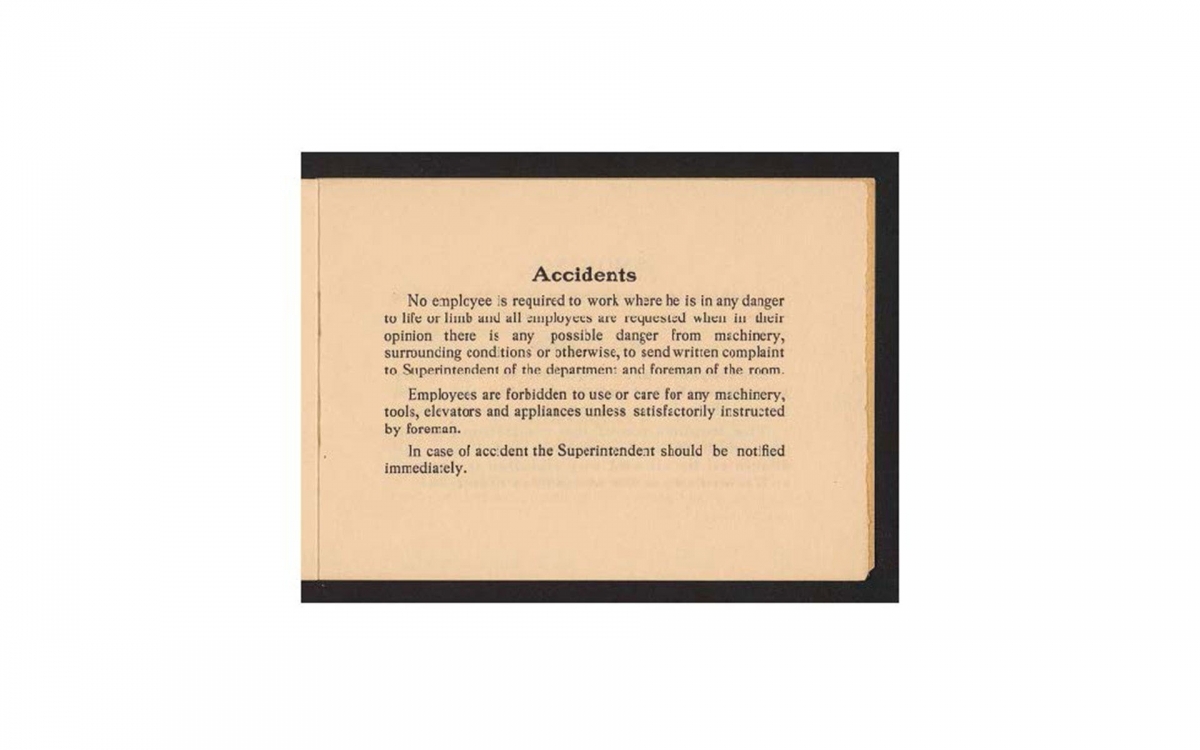Workplace Safety Doesn’t Happen by Accident! It’s Everyone’s Responsibility

Creating a safe working environment for employees doesn’t happen inadvertently. It’s an intentional and ongoing effort to build awareness, set guidelines and constantly monitor working conditions, such as: equipment safety, physical hazards, materials handling and the ergonomics of repetitive movement. It also requires every employee – at every level – to take responsibility for their own safety and the safety of those around them.
Since its inception, Kodak has employed hundreds of thousands of people around the world in manufacturing, office and field settings. Across the span of 130+ years, the company has always placed tremendous importance on keeping each of those individuals safe and healthy.
Hear from Kodak’s Director of Health, Safety and Environment, Richard Szembrot, on how the company continues to build on its heritage by putting safety first, lowering incident rates and pursuing continuous improvement today:
“Kodak was founded in the late 1800s, well before a widespread interest in worker safety had emerged. From an industrial standpoint, mass production and early forms of automation were becoming more prevalent, with machines and power sources largely unguarded. Safety regulations had not yet become standard, and global competition encouraged factory managers to strive for ever-increased output. Broadly speaking, industry had little incentive and little concern for improving safety or workplace conditions.
Despite prevailing practices, Kodak’s founder George Eastman made the safety and health of his employees a top priority – a particularly uncommon mindset at that time. In addition to pioneering employee benefits such as disability compensation, sick pay and insurance, Eastman also introduced one of the first safety and accident prevention policies of its kind in his factories.
Today it is the rule rather than the exception for companies to have comprehensive safety programs in place. The current view is that keeping employees safe isn’t only the right thing to do, it’s also the smart thing to do from a productivity and profitability standpoint. Many companies, including Kodak, are also focused on improving their safety performance by increasing employee engagement in safeguarding themselves and those around them.
Individual awareness and safe behaviors are critical to incident prevention, as unsafe acts cause four times as many accidents and injuries as unsafe conditions. With root causes ranging from taking shortcuts to ignoring safety procedures, 80 out of every 100 accidents are attributable to the person or persons involved.
Providing a safe and healthful work environment, alongside a robust safety framework (policies, procedures, compliance, etc.) is every company’s responsibility. However, achieving a true step-change in safety performance has to be accomplished employee by employee, with everyone in the company looking out for themselves and each other.
To keep our employees engaged in the culture of safety at Kodak, we focus on four key areas:
Policies and Procedures
- Assure sound policies and safety protocols are clear, comprehensive and visible to all
- Clearly communicate that employees have the right to refuse unsafe work
- Ensure employees’ right to know or be informed about actual and potential dangers in the workplace
Risk assessment and Prevention
- Implement regular workplace risk assessments and hazard identification
- Encourage workers to report all health and safety concerns
- Respond promptly to all health and safety issues as they are reported
- Measure and support any changes required
- Conduct thorough investigations of all incidents and near misses
- Examine root causes for future prevention
Communication and Leadership
- Develop a safety leadership culture at all levels of the business
- Ensure all leaders of the business uphold the principles of a positive safety culture
- Make health and safety part of all workplace communications:
- Safety newsletters, reports, articles
- Safety share-outs, morning markets, best practice highlights, employee recognition
- Noticeboards that display the latest safety information
- Full incident de-briefings, including corrective actions to minimize incidents happening again
Training
- Make health and safety of primary importance when inducting new workers into the workplace
- Include health and safety policies in all training materials
- Offer and promote safety training sessions
- Communicate all changes in equipment and work processes to workers
- Encourage participation in workplace health and safety activities
Today it’s more important than ever to pursue continuous improvements in a company’s safety performance. With the increasing pace of technological innovation, and rising pressures on productivity and profitability – most companies are expected to do more, faster, with less people.
Fast is not always the friend of safety – and if you don’t take the time to fully engage employees, it can cost a lot more in the long run.
We all share accountability for encouraging a safety culture. All accidents and incidents are preventable. The more we are involved, the safer our work environment will be.”